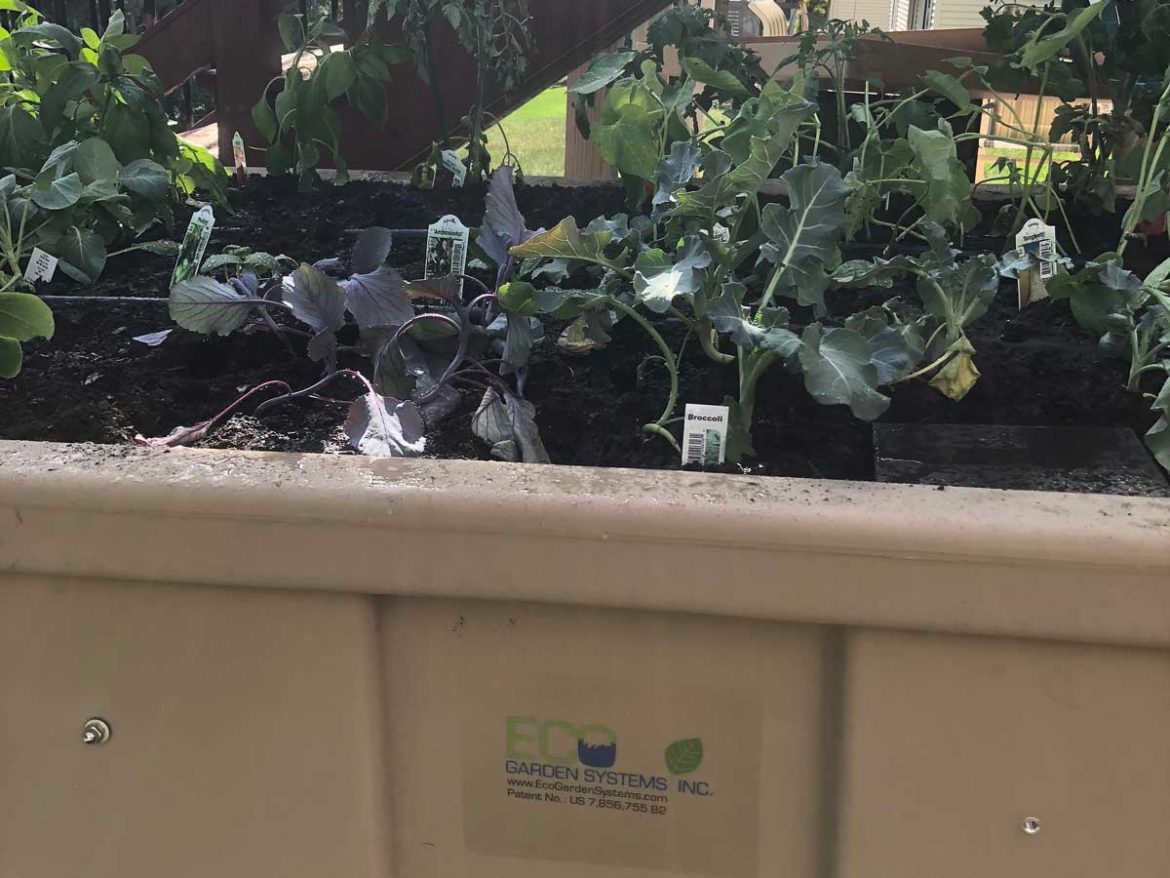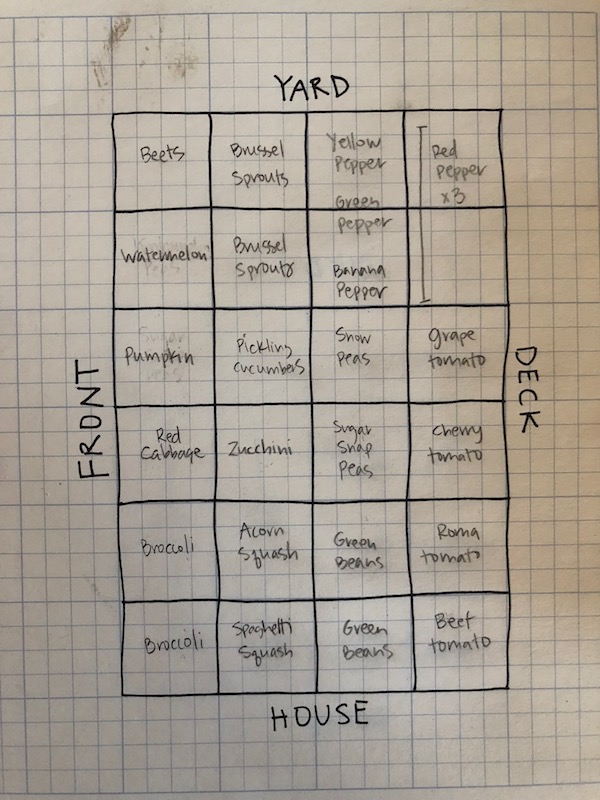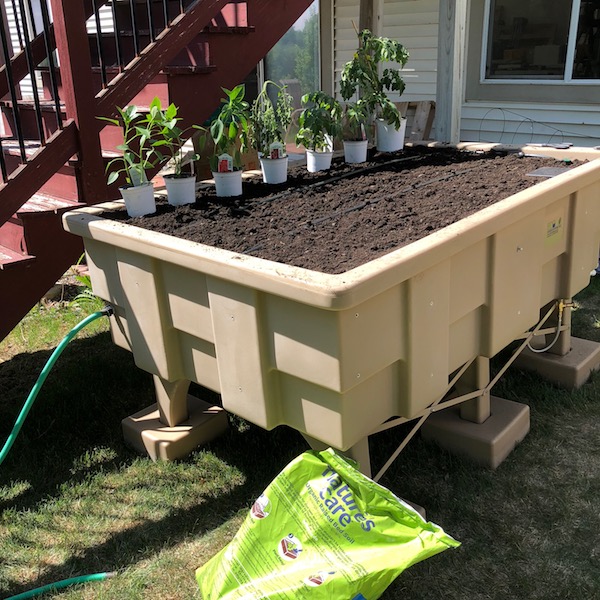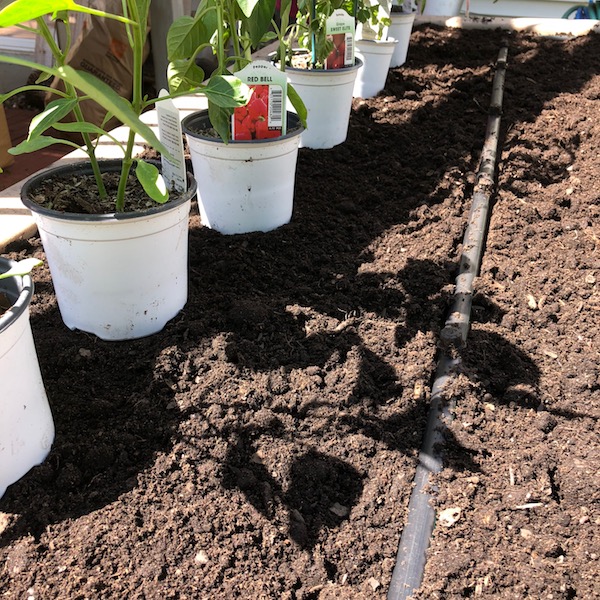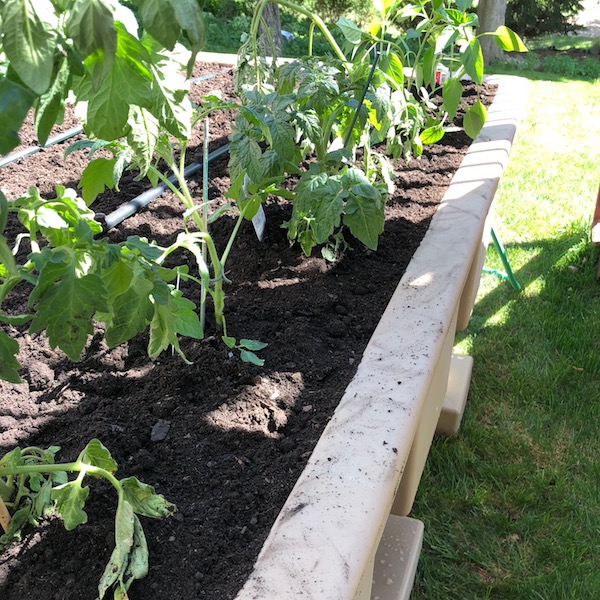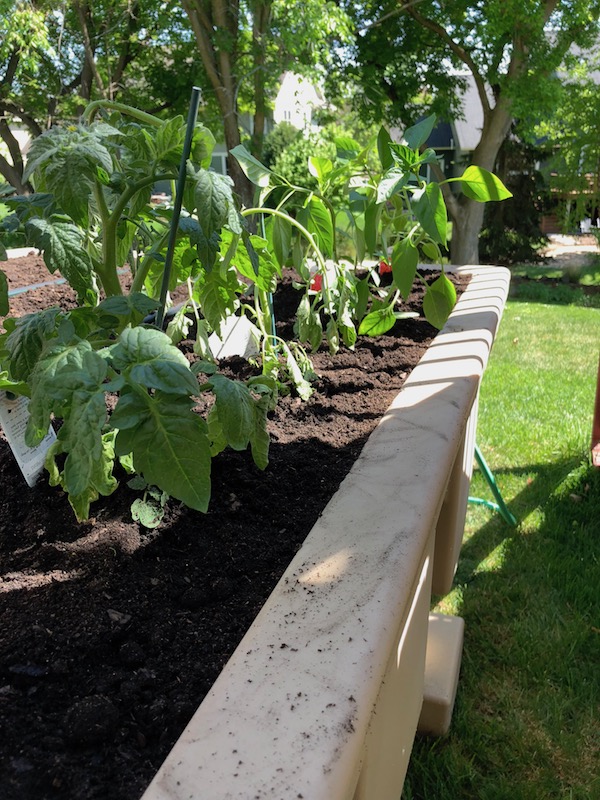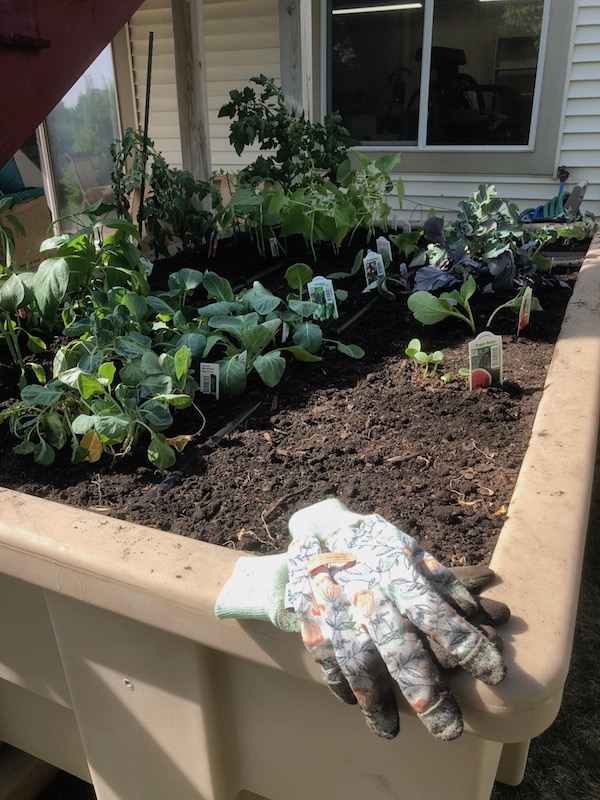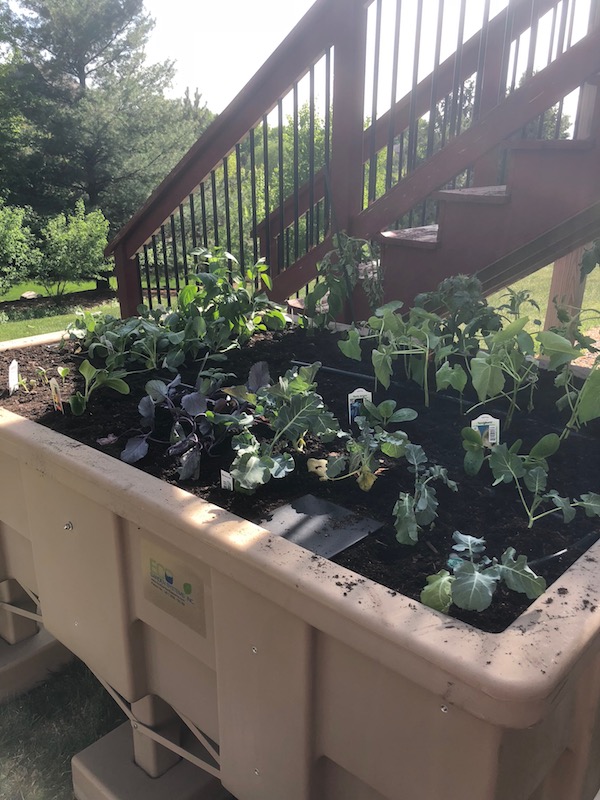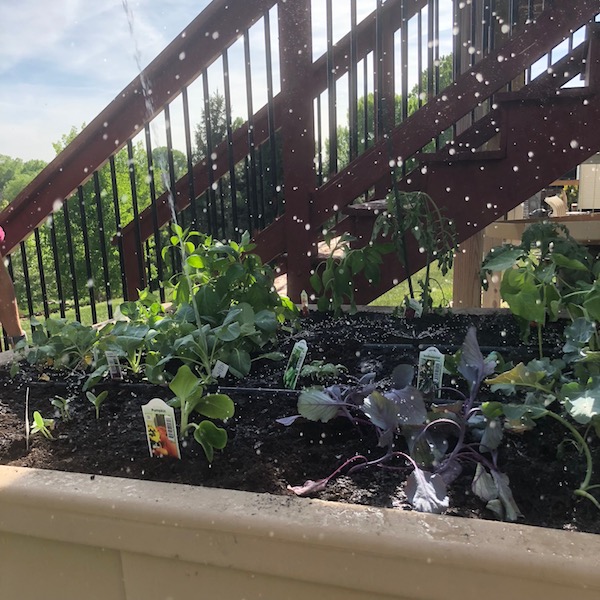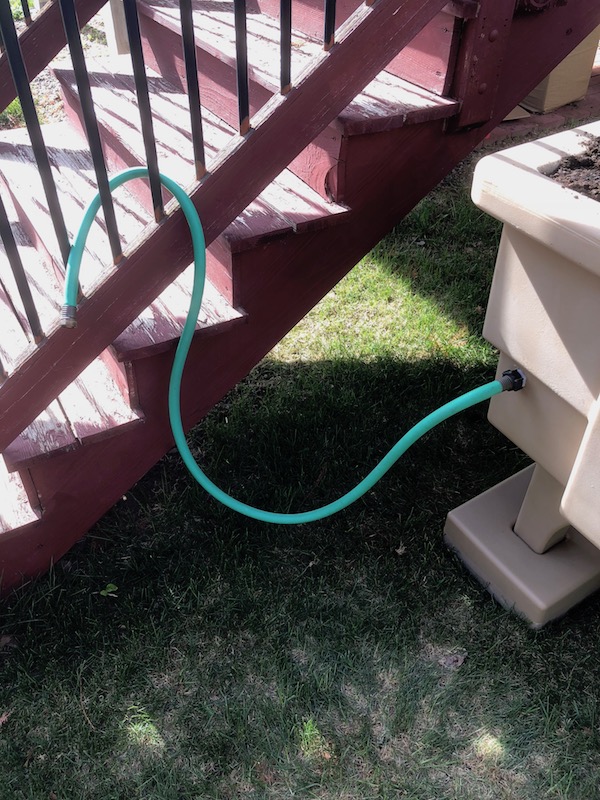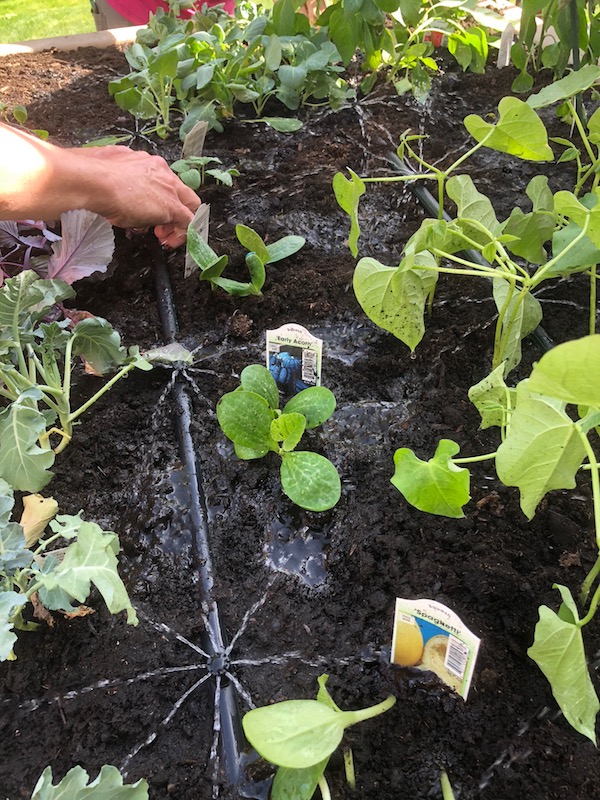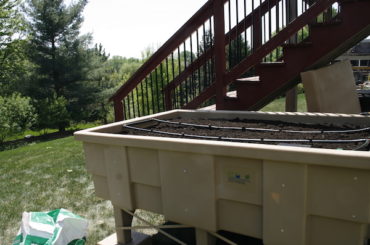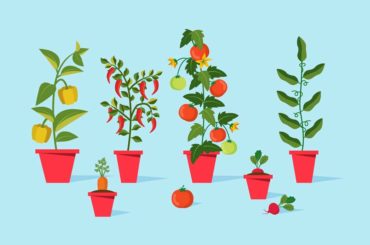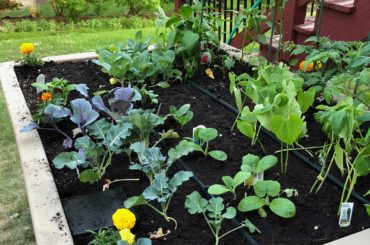We set up the garden Friday and needed to let the soil settle for a few days before planting. This meant we’d have to wait until Sunday to plant, which gave us a day to decide what we wanted to plant (or rather, narrow down the list).
Since it’s a little late in the season (thanks to the snowpocalypse Minnesota experienced in April), we knew some plants might not be available, and others would be past the ideal starting time. With few expectations, we made a list and headed over to Gertens to buy whatever they had. We got pretty lucky; whether they never carried them or were just out, we’re only having to grow three crops from seed. More on that later.
Companion Planting
Next, we had to determine if there were any plants who didn’t play nicely together. As it turns out, our only contraindicated combinations concerned the beets. Some plants had recommended “growing buddies” so we tried to pair those together as much as possible. And, of course, we wanted to keep families together (multiples, tomatoes, peppers etc.).
Google “companion planting” to get recommendations for your own garden. We consulted a few different resources, most of which had similar recommendations but some were contradictory. Case in point: a Google search at this writing revealed a few “oops” combinations which contradicted the book we consulted during planning. C’est la vie…
Now, let’s do some math. Eco Garden (and many other reputable sources) recommend the grid method for planting. The garden is 4 x 6 feet, which means we have 24 square feet. We pretty much followed a 1 plant per square foot rule except for the peppers.
Without further ado, here are the plants that made the cut:
- Broccoli (x2)
- Brussel Sprouts (x2)
- Red Cabbage
- Green Pepper
- Yellow Pepper
- Red Pepper (x3)
- Banana Peppers
- Watermelon
- Spaghetti Squash
- Acorn Squash
- Green Beans (x2)
- Roma Tomato
- Cherry Tomato
- Grape Tomato
- Beef (Big Boy) Tomato
- Sugar Snap Peas (from seed)
- Snow Peas (from seed)
- Beets
- Pickling Cucumbers
- Zucchini
- Pumpkin
Later we added Orange Peppers (you can tell what our family staples are…) and Marigolds (apparently the smell keeps critters – bunnies and deer – away).
You may be thinking – holy list, is all of that going to fit in the garden? As a matter of fact, yes it is. Remember the “air gap technology” explained in the first post? This makes the soil an ideal growing environment for our little plants. With abounding, contained and self-controlled resources, we can “overplant” the garden without negative results.
Once we had everything planned out we headed out to the garden to plant. This is the easy part. We placed them row by row and one person extracted the plant from its container and loosened the roots while the other dug the hole. We maintained a decent perimeter around the edge, and tried to position the plants in the “middle” of their square. It took about 30 minutes to get them all in, including the three we planted from seed.
Planting From Seed
As mentioned, we planted three of our crops from seed. What we should have done is started the seeds early inside, so that we could plant seedlings rather than seeds in the garden. Hindsight is 20/20, and we’ll plan to do this next year. But for this year, we plopped those pea and beet seeds straight into the soil and said a little prayer…
The Inaugural Watering
The garden has hoses which cross over the garden and have small nozzles where the water sprays out – or is supposed to. We had hooked up the hose to fill the garden before planting, so there was water in the reservoir to start. Once everything was planted, it was time to water. So, we turned on the hose (again, we’ll be getting a pump set up at some point) and waited.
Nothing happened at first, but then water started to come out the overflow at the back of the garden. Hm. It had been suggested (and dismissed by the author of this post) that maybe the nozzles had to be opened. Turns out that is exactly what had to happen.
If you’re following the mechanics here, you can predict what happens next. For the rest of you, here’s a hint: the water, which was flowing through the small tube with fairly high pressure, had a new, low resistance exit strategy. “Stay in my claustrophobic tube, or escape?”
Escape, obviously. Twist. Twist. BOOM! The water SHOT straight up like Old Faithful, blowing the nozzle clear off the hose, and scaring us half to death! Of course – once our stomachs returned to their proper positions – the episode was followed by raucous laughter and delight that it was user error rather than mechanical failure. We turned off the hose, loosened the nozzles then turned the host back on to complete the inaugural watering.
So with that, the garden was planned, planted and watered – ready to grow!
Now, the waiting. I’m still not a patient person, but who knows. Maybe this garden will sneak in a few life lessons in addition to its bounty…

